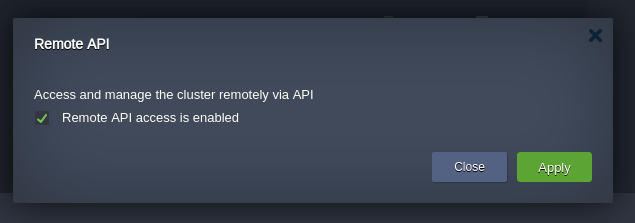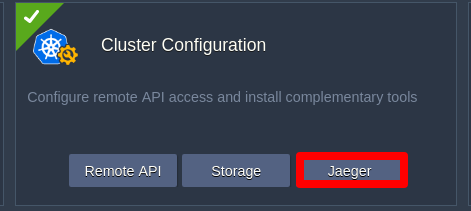Enhancing Your AccuWeb.Cloud Kubernetes Experience: A Guide to Adding Add-Ons
Introduction
AccuWeb.Cloud offers a powerful Kubernetes platform that empowers users to deploy, manage, and scale their applications seamlessly. One of the key features of this platform is the ability to enhance its functionality through the integration of add-ons. In this article, we’ll explore how to add add-ons to your AccuWeb.Cloud Kubernetes cluster and delve into the benefits and use cases of these extensions.
Adding Add-Ons to Your AccuWeb.Cloud Kubernetes Cluster
Adding add-ons to your AccuWeb.Cloud Kubernetes cluster is a straightforward process that allows you to customize your environment to meet your specific needs. Here’s a step-by-step guide:
1. Identify Your Requirements
Before adding add-ons, assess your requirements and determine which extensions will best suit your use case. Whether you need monitoring, logging, networking, security, or other functionalities, AccuWeb.Cloud offers a diverse range of add-ons to choose from.
2. Install Kubernetes
Before delving into add-on installation, let’s make sure Kubernetes is set up on your AccuWeb.Cloud environment. Acting as the cornerstone of your cluster, Kubernetes takes charge of orchestrating and managing containerized applications.
Steps to Deploy a Kubernetes Cluster on AccuWeb.Cloud
1. Access AccuWeb.Cloud Marketplace
Log in to your AccuWeb.Cloud account and navigate to the Marketplace section. Locate the Kubernetes Cluster under the Clusters category or use the search feature.
2. Select Kubernetes Cluster Package
Click on the Kubernetes Cluster package to initiate installation. Note that this option is exclusive to billing customers.
3. Customize Cluster Configuration
In the installation frame, tailor the cluster to your needs:
- Version: Choose the Kubernetes version.
- K8s Dashboard: Select from v2 or Skooner options.
- Topology: Opt for Development or Production based on workload requirements.
- Ingress Controller: Pick preferred NGINX, Traefik, or HAProxy.
- Deployment: Choose a clean cluster or specify custom helm/stack deployment commands.
- NFS Storage: Enable/disable NFS storage attachment as needed.
- Modules: Check to enable Prometheus & Grafana, Jaeger Tracing Tools, and Remote API Access.
4. Provide Environment Details
Input environment specifics:
- Environment Name: Name your Kubernetes environment.
- Display Name: Specify an alias for identification.
5. Initiate Installation
Once the configuration is set, click Install to commence the installation process.
6. Wait for Configuration
Allow a few minutes for the platform to configure your Kubernetes cluster automatically. Resources will be provisioned, components deployed, and infrastructure set up accordingly.
7. Verify Cluster Deployment
Post-installation, confirm deployment status by accessing the provided control panel or dashboard on AccuWeb.Cloud. Ensure all components are operational for smooth functioning.
Cluster Configuration: Enhancing Your Kubernetes Experience
To leverage the latest features and tools in the Kubernetes Cluster solution, you can upgrade your existing environment with a dedicated add-on, without the need to recreate the entire cluster from scratch. Follow these steps to initiate the upgrade process:
Step 1: Hover over the Control Panel layer in your Kubernetes environment.
Step 2: Click on the Add-Ons button that appears.
Step 3: In the opened section, locate and select the Upgrade option for the Kubernetes Cluster Configuration add-on panel.
Upon confirming the action via a pop-up, the platform will automatically initiate an update to the next version of the Kubernetes Cluster. If the latest version is already installed, a corresponding notification will be displayed on the dashboard, indicating that no further action is required.
This streamlined process ensures that your Kubernetes environment stays up-to-date with the latest enhancements and improvements.
By following these steps, you can seamlessly upgrade your Kubernetes cluster configuration to access the latest enhancements and capabilities offered by the platform.
Enhance the functionality of your Kubernetes cluster by incorporating additional add-ons. Explore options to configure remote API access and install complementary tools.
Configure remote API access and install complementary tools to optimize your Kubernetes environment. This cluster configuration add-on offers three essential buttons to tailor your setup:
1. Remote API
Enable remote API access to manage your Kubernetes cluster from anywhere using tools like kubectl or other remote clients. This feature enhances flexibility and productivity in Kubernetes management tasks, streamlining cluster administration.
To activate, click on the “Remote API” button from the addon Cluster Configuration in the addon panel, check “Access and manage the cluster remotely via API,” and confirm by clicking “Apply” and then “Yes.”
2. Storage
Improve storage management by installing additional storage-related tools or plugins. This option enables you to extend your storage options within the cluster, enhancing data storage capabilities and supporting various workload requirements. To activate, click on the “Storage” button from the addon panel.
You will receive a prompt asking if Cluster Storage will be added if it is missing. Continue by clicking confirmation “yes.”
3. Jaeger
Enhance monitoring and troubleshooting capabilities with Jaeger, an open-source distributed tracing system. By enabling Jaeger, you gain insights into the flow of requests across microservices, facilitating efficient troubleshooting and optimization of your Kubernetes applications. To activate, click on the “Jaeger” button from the addon panel. Similarly, you will get a prompt to confirm the addition of Jaeger. Proceed by clicking confirmation “yes.”
Conclusion
By adding add-ons to your AccuWeb.Cloud Kubernetes cluster, you can enhance its functionality, performance, and resilience. Whether you need monitoring, logging, networking, or other capabilities, AccuWeb.Cloud provides a rich ecosystem of add-ons to meet your requirements.
By following the steps outlined in this article and exploring the diverse range of add-ons available, you can optimize your Kubernetes environment and unlock its full potential for deploying and managing containerized applications.


















